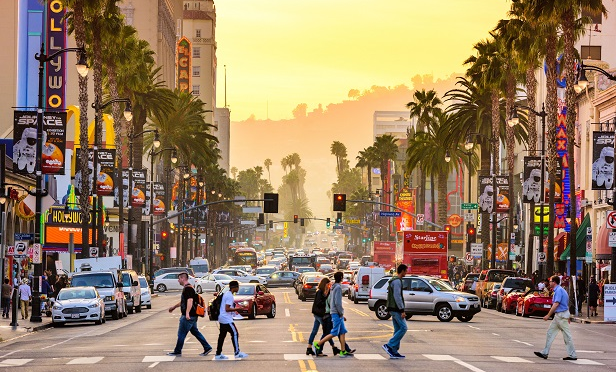Nearly half of all Los Angeles retailers have been deemed essential. According to a new report from CBRE, essential retailers occupy 60 million square feet or 45% of the total retail space in Los Angeles. The report includes grocery stores and pharmacies in the essential category as well as partially closed businesses, like restaurants, which which are still able to operate through delivery and to-go orders. The pronounced supply of essential businesses could ultimately help the retail sector weather the current economic dislocation.
"L.A.'s concentration of essential businesses is not exceptional relative to other markets, but the numbers highlight the degree to which the region's retail landscape is an integral part of residents' daily lives," Eric Willett, regional director of research at CBRE, tells GlobeSt.com. "These grocery stores, restaurants, drug stores, etc. are an anchor for L.A.'s diverse set of communities, and they highlight the likely divergence in outcomes for different retail product types."
Retail operations is only one side of the story; retail spending is the other. A combination of wide spread job loss and social distancing measures have put significant downward pressure on retail spending, but the report, again, has good news. "Undeniably, social distancing regulations have shifted the region's retail landscape," says Willett. "However, these numbers remind us that while retail activity throughout Los Angeles has dropped, it hasn't disappeared."
Some businesses, namely grocery stores, have actually seen an increase in sales, showing that in some ways retail spending has shifted, not declined. "Many of these retailers have already announced significant hiring to keep pace with consumer demand. For assets like freestanding and neighborhood retail centers, the high concentration of essential retailers suggests that these products are likely to be relatively resilient throughout the COVID-19 crisis."
Retail investors have favored daily needs retail—which largely makes up the "essential" segment—this cycle, as a way to hedge against the growth of online shopping. This event has actually affirmed that investment model. "In many cases we are seeing the coronavirus accelerate trends that were emergent before the pandemic," says Willett. "In many locations, daily needs retail has seen a substantial uptick in business, and—on the other end of the spectrum—adoption of e-commerce for many transactions has jumped past previous estimates."
In terms of metrics, Willett says it is still too early to tell if there will be a meaningful impact on rent and pricing in the near or long term. Although, he predicts a swift recovery. "It is difficult to anticipate how the market will respond over the coming months," says Willett. "However, as social distancing slows the spread of the virus and policy measures take effect, we anticipate economic growth will pick up towards the end of the year, which should have positive downstream effects for daily needs retail."
Public policy will also play a crucial role in the recovery of brick-and-mortar retail businesses. If these businesses can get access to funding in the short term, they will be in a better position to survive. "The region's essential businesses notwithstanding, the COVID-19 crisis has imperiled a large swath of L.A.'s retail landscape," he says. "If public policy measures are effective, the long-term impact of the crisis on these tenants could be substantially mitigated, and L.A.'s large concentration of essential businesses is poised to lead the way."
© 2025 ALM Global, LLC, All Rights Reserved. Request academic re-use from www.copyright.com. All other uses, submit a request to [email protected]. For more information visit Asset & Logo Licensing.








